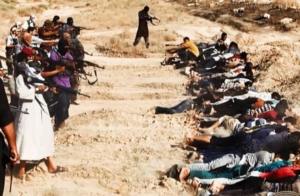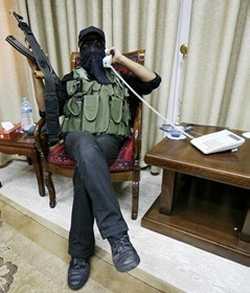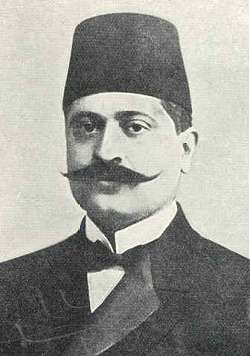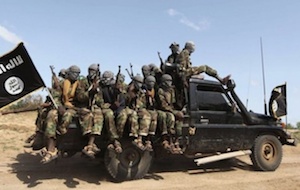Direct Translation via Google Translate. Edited.
Back in the good old days, I read Lester Grau's narrative on the Battle of Grozny from the website of the US Army's Office of Foreign Military Studies. You can find one of his works published in 1996 here. Not the same as the article I read, but it is engaging if interested in this period of Russian military history.
Like me, Grau is a student of Russian military history, and has a number of books published on the matter.
by Andrey Zvorykin
[REGNUM] "Our war began on the morning of December 11, 1994... And we don't have our own Victory Day," these words of Andrei Palachev, a veteran of the first Chechen war and participant in the battles in Grozny, are perhaps typical for memoirs about the events of thirty years ago. In any case, the expression "a war without a Victory Day" is often found in the testimonies of veterans who, in the mid-nineties, were on average about twenty years old, like the Primorsky OMON fighter Palachev.

"As the poet said: "You can't make drums out of our skin - it's thin. Napoleonic plans are often pulled out of thin air," - these are already lines from the memoirs of General Gennady Troshev, who during the years of the first Chechen campaign was the commander of the Joint Group of Forces of the Russian Ministry of Defense.
The war began with the failed December assault on Grozny, cost the lives of 5 to 14 thousand “federals,” as the Russian press called Russian soldiers at the time, and ended with the Khasavyurt Peace Treaty in August 1996, which effectively handed victory to the Islamists and separatists of “Ichkeria”*.
"DEMOCRATIC PROCESSES"
"Any war is started and ended by politicians. Can the political decision to send troops in December 1994 be considered an adventure? To some extent, yes," admitted General Troshev, for whom Grozny was no stranger - he spent his childhood there. "To some extent" - because by the end of 1994 there were clearly no other ways, except military ones, to liquidate the criminal-terrorist regime that had seized power in Chechnya. But seized it at least with the connivance of the federal center.
In June 1991, even before the GKChP putsch, the leader of the All-National Congress of the Chechen People (ANCP), former Soviet Air Force Colonel General Dzhokhar Dudayev took control of part of the Chechen-Ingush ASSR. In July of the same year, Dudayev announced the secession of the "Chechen Republic of Nokhchi-cho" from the RSFSR and the USSR.
The federal leadership of the time — President Boris Yeltsin, Vice President Aleksandr Rutskoi, and Supreme Council Speaker Ruslan Khasbulatov — clearly had other things on their minds. On the eve of the collapse of the USSR, for example, the redistribution of Union property seemed more important. Radicals from the “general democratic forces of Chechnya” were seen as allies in the fight against the “reactionary party bureaucrats.”
When on September 6, 1991, Dudayev’s “guard” stormed the building of the Supreme Council of the Chechen-Ingush ASSR, the television center and the radio house (during these events, the first blood of this conflict was shed, the head of the Grozny city council, Vitaly Kutsenko, was thrown out of a window), Khasbulatov sent a telegram to his small homeland:
“A favorable political situation has finally arisen, in which the democratic processes taking place in the republic are being freed from overt and covert shackles…”
In November 1991, the federal government tried to solve the Dudayev problem with a cavalry charge. Yeltsin declared a state of emergency in Chechnya, and to pacify the separatists, not even the notorious "two parachute regiments" were sent, but one "transport plane" with special forces of the Airborne Forces. At the Grozny airport, Dudayev's men blocked the plane and "offered" the fighters to return in a friendly manner.
THE KINGDOM OF THE "COCKROACH MUSTACHE"
While the rest of Russia was experiencing the shock of Gaidar’s reforms and was drawn into the confrontation between Yeltsin and the same Khasbulatov and Rutskoi, in Chechnya the process of the semi-disintegration of the state (which was also evident in Tatarstan, the Urals, and other parts of the weakened country) had gone too far.
By June 1992, de jure, the Russian Armed Forces had left the region, leaving the militants with a huge amount of military equipment and ammunition depots. According to the agreement signed with Dudayev by Defense Minister Pavel Grachev, the "Ichkerians" were to receive half of the arsenal - but in reality, our officers could only take their service weapons.
This is how the separatists got their army.
At the same time, the federal center continued to financially support Chechnya, which had not signed the federal treaty. Thus, in 1993, the republic was allocated 11.5 billion rubles for social payments. The money did not reach the recipients, but ended up in the pockets of the leadership of "Ichkeria", including the military leaders of the separatists.
Dudayev "stopped paying pensions to old people, teachers' salaries... Schools closed. It was enough of a primary education for us, if only they could count money," recalled a builder from Grozny, Gunki Khukiev. Only criminal elements could count money in the "independent state." The center "did not notice" the notorious Chechen avisos - the execution of a fake transaction with the subsequent "disappearance" of the swindlers. According to experts, more than 4 trillion rubles of the then rubles were received from these avisos.
They also failed to notice the displacement of the non-Chechen population - essentially, ethnic cleansing. If according to the 1989 census, 294 thousand Russians lived in the Chechen-Ingush ASSR (with a total population of 1 million 270 thousand), and 270 thousand Russians out of a population of 397 thousand lived in Grozny, then in the 21st century, about 1.9% of ethnic Russians live in the Chechen Republic, about 24 thousand people. About 250 thousand people left the republic even before the start of the first campaign.
Already in the first half of the 1990s, the rampant banditry (including armed banditry) sobered up many residents of the "sovereign state", especially city dwellers. "My brother... got nothing from the revolutionary pie, now he called his idol Dudayev nothing other than "ts1eza mekhash" (cockroach mustache). There were tens of thousands of such repentants," Khukiev recalled.
But the leaders of Ichkeria already felt strong enough to suppress any discontent. On June 4, 1993, field commander Shamil Basayev made his presence known for the first time - his fighters stormed the headquarters of the anti-Dudayev opposition, which was headed by the mayor of Grozny Bislan Gantamirov (who had previously had a falling out with Dudayev over the income from the oil business).
The Ichkerians were making plans to "export the revolution." It was not for nothing that Dudayev gave shelter to the ousted former President of Georgia Zviad Gamsakhurdia and simultaneously supported the Confederation of Mountain Peoples of the Caucasus, whose militias had recently fought against the Georgians in Abkhazia.
PROLOGUE TO THE WAR. THE "GANTAMIROV" ASSAULT
The federal center, having “blown away” Chechen separatism, decided to play its own subtle game, overthrowing Dudayev with the hands of the opposition, which became a more or less organized force after the “president of Ichkeria” dissolved the Chechen parliament.
The opposition was supported by the urban population (which was gathered under the wing of Dudayev's personal enemy, Gantamirov) and some clan leaders who did not fit into Dudayev's system. An example is the former head of Dudayev's security, Ruslan Labazanov, who spoke out against Dudayev's men on the side of the Russian Armed Forces, but was not much different from them in essence.
In the summer of 1994, a civil war broke out in Chechnya between the "president of Ichkeria" and the militants loyal to him (led by Basayev and Ruslan Gelayev ) on one side and the Provisional Council of the Chechen Republic on the other. Several "federal" tank crews appeared at the disposal of the opposition. Gantamirov and Labazanov's militia took control of the cities of Urus-Martan and Argun and on November 26, 1994, they moved on Grozny.
After the first shelling from Dudayev's men, the opposition infantry scattered, the tank crews, left without cover and not knowing the terrain, found themselves in a hopeless situation, 28 of them were taken prisoner, about 18 (data based on lists of names) were killed.
This event had a decisive impact on Yeltsin's decision to send in troops. On December 9, he signed a decree "On measures to suppress the activities of illegal armed formations on the territory of the Chechen Republic and in the Ossetian-Ingush conflict zone." A few days before, on December 1, a Russian air raid completely destroyed the planes that had been captured and bought by the separatists.
“THEY DIDN’T EVEN HAVE TIME TO COME UP WITH A NAME”
Finally, on December 11, 1994, units of the Russian Armed Forces, in accordance with Yeltsin’s decree, entered the Russian region of Chechnya.
The troops advanced in three groups. The first, under the command of Lieutenant General Vladimir Chilindin, advanced from the northwest, from the Mozdok region of North Ossetia. The second, from Vladikavkaz, under the command of Lieutenant General Alexander Chindarov, moved from the northwest through Ingushetia. The third, from Kizlyar, under the command of Lieutenant General Lev Rokhlin, headed from the northeast from the territory of Dagestan.
The overall command of the operation to restore constitutional order was entrusted to Defense Minister Grachev. "Pavel Grachev brought the army to a terrible state," Rokhlin later lamented. This concerned supplies, weapons, and the level of training of conscripts. However, it is unlikely that the problem was solely Grachev's, since he did not possess such outstanding abilities to destroy the mighty army organism to its foundations in just a few years. Structural problems in the armed forces arose much earlier.
An important point: it was difficult to talk about broad public support for the military operation. The media, controlled by media oligarchs Vladimir Gusinsky and Boris Berezovsky, broadcast if not a pro-Dudaev, then a "neutral" position. Not only liberals, but also the left opposition, including the Communist Party of the Russian Federation, criticized the operation.
Meanwhile, our group's problems began almost immediately: only the Mozdok group achieved relative success, reaching the village of Dolinskoye (10 kilometers from Grozny) the next day. The Vladikavkaz and Kizlyar groups were soon blocked and forced to either break through with a fight or bypass enemy-controlled settlements along a longer route.
Finally, 16 days after the start of the march (according to the plan, 3 days were given for the advance), all groups reached Grozny, blockading it from three sides. General Troshev later noted :
"According to some generals, the initiative for the "festive" New Year's assault on Grozny belonged to people from Pavel Grachev's inner circle, in order to coincide the capture of the city with the birthday of the Russian Minister of Defense (January 1). I don't know how serious this is. Another thing is that the operation was prepared hastily, without a real assessment of the enemy, his forces and resources, without careful preparation. This is a fact. They didn't even have time to come up with a name for this operation!"
"GOD, HELP ME BREAK FREE..."
The southern outskirts of Grozny remained unblocked. It was assumed that civilians would be evacuated this way, but in fact the militants were receiving supplies from here throughout the assault. On December 19, the first bombing attack was carried out on the city center, and on the 31st, the bloodiest battle of the war began - the storming of Grozny.
According to General Troshev, "many commanders with big stars, federal-level chiefs, believed that it was enough to go to Grozny, fire a couple of times in the air, and that would be the end of it." The military leader believed that it was precisely this method of intimidation that was the basis for the hastily approved plan to take Grozny, and, Troshev believed, it was approved "at the very top."
About 250 units of equipment entered the city with infantry cover, but the fallacy of this plan soon became apparent. The number of militants, their wide variety of anti-tank weapons, and their completely fanatical resistance were unexpected.
The units of the northern group were the most unlucky.
The fighters of the 131st Separate Motorized Rifle Brigade (better known as the Maikop brigade) received an order from the commander of the "North" group, Konstantin Pulikovsky : together with the motorized riflemen and tankers of the 81st Motorized Rifle Regiment (who had 10 tanks at their disposal), reach the city center and fortify themselves in the railway station building.
The combined group of "Maikopts" and fighters of the 81st regiment carried out the order, but by 19:00 the station they had occupied was surrounded by superior forces of militants. When reinforcements broke through here on the evening of January 1, no more than a third of the defenders remained alive. The commander of the 131st brigade, Colonel Ivan Savin, was also killed in the battle.
Captain Vyacheslav Mironov, a participant in subsequent battles in Grozny, testifies in his book I Was In This War: “As we approached the railway station, we began to come across burnt, mutilated equipment and many corpses. Our corpses, our Slavic brothers, were all that remained of the Maikop Brigade, the one that was burned and shot by the “spirits” on New Year’s Eve from 1994 to 1995. God, help us escape…”
HARD VICTORIES AND STRANGE DEFEATS
War plans had to be changed on the fly and "in the field," Troshev noted. The troops held up in other directions changed their tactics by January 7, focusing on maneuverable groups, which gradually yielded results. On January 9, the Grozny Oil Institute and airport were occupied with heavy fighting, and on the 19th, the city center and the presidential palace. The militants retreated behind the Sunzha River.
It was only on February 3 that the decision was made to close off the southern direction and completely blockade Grozny. The city was surrounded only by February 9. The Chechen capital was completely occupied by March 6, when Shamil Basayev's fighters retreated from Chernorechye, the last district in the hands of forces loyal to Dudayev.
With the fall of Grozny, the actions of the Ichkerians finally acquired a partisan character - and our army was not ready for this.
Although the entire flat part of Chechnya and most of the mountainous regions were occupied over the following months, the army was unable to actually ensure control over the territory. On the one hand, ambushes and raids by militants became frequent occurrences, and on the other, our troops repeatedly occupied the same "inhabitants", which were again captured by the separatists after the redeployment of the "federals".
"One of the peculiarities of this strange war, which literally drove us crazy, is that we passed through and cleared the same villages several times. In the end, I studied the area so well that I could fight there blindfolded," the publication "Chelyabinsk Segodnya" cited the testimony of Alexander Berezovsky, who during the first Chechen war was the head of the reconnaissance group of the 17th detachment of the special forces of the internal troops "Edelweiss".
A NEW TYPE OF ENEMY
Thus, simultaneously with the exhaustion – moral and physical – of the Russian troops, the actions of the militants became ever bolder. Beginning in March 1996, raids on Grozny became an everyday reality. In addition to guerrilla warfare, the enemy used a method of warfare for which we were even less prepared – terror.
On June 14, 1995, about two hundred of Basayev's militants broke through the border of Chechnya and Stavropol Krai and seized a hospital in Budyonnovsk. About 1,200 city residents were taken hostage, herded into the hospital buildings. After negotiations, Basayev's men were allowed to leave. At that time, 143 Russian fighters were killed (including 46 special forces), 415 were wounded, with enemy losses of 19 killed and 20 wounded.
In January 1996, Salman Raduyev's group attacked the Dagestani city of Kizlyar. At the captured helicopter base, the bandits destroyed several units of equipment and took hostages. While security forces were approaching the city, the militants captured a hospital and a maternity hospital, driving about 3 thousand more residents there. During negotiations, the terrorists, along with some of the hostages, were released from the encirclement. Retreating, Raduyev's men also captured the village of Pervomayskoye. As a result, the terrorists were released.
Also, in parallel with the military actions, the Ichkerians captured airplanes, buses, and attacked railways.
In response, Russia took the first – and sometimes successful – steps in the fight against terrorism.
Thus, on April 21, 1996, our special services managed to track the mobile communication channels of the "Generalissimo of Ichkeria" Dudayev. During a conversation with the State Duma deputy, liberal Konstantin Borovoy, two Su-24s struck the location of the separatist leader.
Dudayev's successors as "presidents of Ichkeria" - Zelimkhan Yandarbiyev and Aslan Maskhadov - could no longer effectively control the "brigadier generals" and other field commanders. This defect in the system, however, would come back to haunt him in 1999, when the gangs of Basayev and Khattab attacked Dagestan without Maskhadov's knowledge.
THE SECOND "OBSCENE WORLD"
On August 6, 1996, the militants "turned the tide" of military operations: another attack on Grozny allowed them to take control of the city. At the same time, the separatists captured the large cities of Gudermes and Argun. The loss of three key centers, ongoing terrorist attacks, the shadow of Budyonnovsk and Kizlyar - all this demoralized the army.
Yeltsin (who had recently narrowly escaped defeat in the elections) was threatened by the political consequences of continuing the conflict. Everything was pushing the federal center of that time to conclude peace on terms unfavorable for Russia.
On August 31, in the Dagestani city of Khasavyurt, the Secretary of the Russian Security Council, Lieutenant General Alexander Lebed, and the "Chairman of the Government of Ichkeria" Aslan Maskhadov signed a ceasefire agreement. Russia was obliged to withdraw its troops from Chechen territory, and the decision on its political status was postponed until 2001.
Later, the Khasavyurt agreements were compared with another “shameful peace” – the Brest peace.
The Chechen people suffered first and foremost from the “peace”.
The "Ichkeria" of 1996-1999 plunged into chaos and became not only a "hub" for drug trafficking and a sanctuary for criminals, but also a springboard for international terrorism. Instead of national separatists like the "Minister of Culture and Brigadier General" Akhmed Zakayev or the "Chechen Goebbels" Movladi Udugov, the leading role was played by supporters of Sharia rule and a worldwide caliphate.
Maskhadov, elected president in 1997, not only failed to control his "prime minister" - the convinced Wahhabi Basayev, but also increasingly fell under the influence of foreign emissaries such as Khattab, Abu al-Walid and Abu Hafs al-Urdani. The transformation of the "Republic of Ichkeria" into the "Caucasus Emirate"*, which eventually swore allegiance to the "Islamic State"*,
| …first Al Qaeda then later ISIS, but do go on… |
was entirely expected. Just as the "export of jihad" was a matter of time, resulting in the attack on Dagestan in August 1999.
THREE BOGATYRS SQUARE
To correct political mistakes (which had been accumulating since the early 1990s and, in fact, led to the war) and miscalculations of the military command, whose Napoleonic plans did not always correspond to their capabilities, the Second Chechen Campaign was needed, no less difficult, but ended in success.
A change in political leadership, a clear national policy and a change in the quality of military planning played their role. During the second campaign, the Russian army proved its combat capability, which it has repeatedly confirmed subsequently - in the defense of South Ossetia, in peacekeeping operations - and is confirming now, in the SVO zone, where units from Chechnya are also proving themselves.
General Troshev died in 2008, having witnessed the beginning of the restoration of the republic under Akhmad-hadji and Ramzan Kadyrov — the military leader writes about the beginning of reconciliation in the finale of his memoirs. The afterword contains a vivid image. In one of the squares of Grozny in the 1970s, a monument was erected to three heroes of the Civil War: the Russian Odessan Nikolai Gikalo, the Chechen Aslanbek Sheripov and the Ingush Gapur Akhriev. "The people immediately nicknamed this place "the square of the three heroes," the general recalled.
Under Maskhadov, there was a slave market here, near the monument, and executions were carried out here according to Sharia law. “The war destroyed the monument to the representatives of three nations. But the pedestal remained. Maybe the monument will be restored, or maybe a new one will be erected?” Troshev wondered and added, “I believe that nothing will ever destroy the surviving foundation, not even the war, which left a deep mark on people’s souls.”
In 2008, Friendship of Nations Square was opened in Grozny after reconstruction, with a restored monument to the “three heroes”.
|
 ...formerly ISIS or ISIL, depending on your preference. Before that they were al-Qaeda in Iraq, as shaped by Abu Musab Zarqawi. They're really very devout, committing every atrocity they can find in the Koran and inventing a few more. They fling
...formerly ISIS or ISIL, depending on your preference. Before that they were al-Qaeda in Iraq, as shaped by Abu Musab Zarqawi. They're really very devout, committing every atrocity they can find in the Koran and inventing a few more. They fling 

 ..the braying voice of Islamic Resistance®,...
..the braying voice of Islamic Resistance®,...
 [AFRICANEWS] The terrorist threat from al-Qaeda, the
[AFRICANEWS] The terrorist threat from al-Qaeda, the  ...the well-beloved offspring of the Moslem Brotherhood,...
...the well-beloved offspring of the Moslem Brotherhood,... ...the decaying remnant of the Ottoman Empire...
...the decaying remnant of the Ottoman Empire... ...al-Qaeda's Syrian affiliate, from which sprang the Islamic State...
...al-Qaeda's Syrian affiliate, from which sprang the Islamic State... ...Turkey's version of Mohammed Morsi but they voted him back in so they deserve him. It's a sin, a shame, and a felony to insult the president of Turkey. In Anatolia did Recep Bey a stately Presidential Palace decree, that has 1100 rooms. That's 968 more than in the White House, 400 more than in Versailles, and 325 more than Buckingham Palace, so you know who's really more important...
...Turkey's version of Mohammed Morsi but they voted him back in so they deserve him. It's a sin, a shame, and a felony to insult the president of Turkey. In Anatolia did Recep Bey a stately Presidential Palace decree, that has 1100 rooms. That's 968 more than in the White House, 400 more than in Versailles, and 325 more than Buckingham Palace, so you know who's really more important...
 ...al-Qaeda's Syrian affiliate, from which sprang the Islamic State...
...al-Qaeda's Syrian affiliate, from which sprang the Islamic State... ...formerly ISIS or ISIL, depending on your preference. Before that they were al-Qaeda in Iraq, as shaped by Abu Musab Zarqawi. They're really very devout, committing every atrocity they can find in the Koran and inventing a few more. They fling
...formerly ISIS or ISIL, depending on your preference. Before that they were al-Qaeda in Iraq, as shaped by Abu Musab Zarqawi. They're really very devout, committing every atrocity they can find in the Koran and inventing a few more. They fling